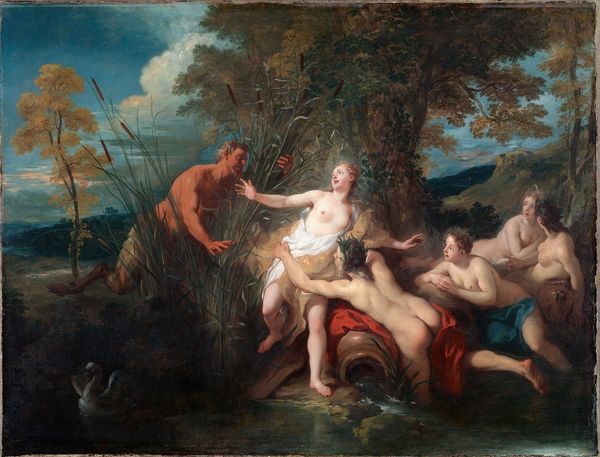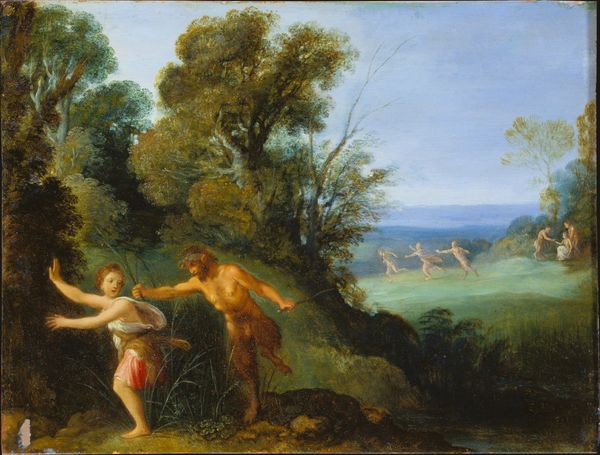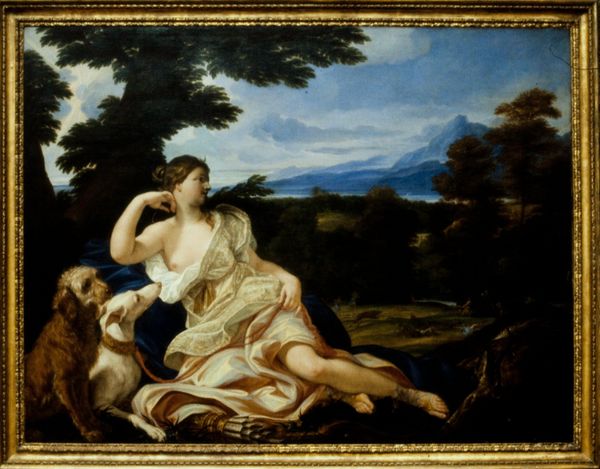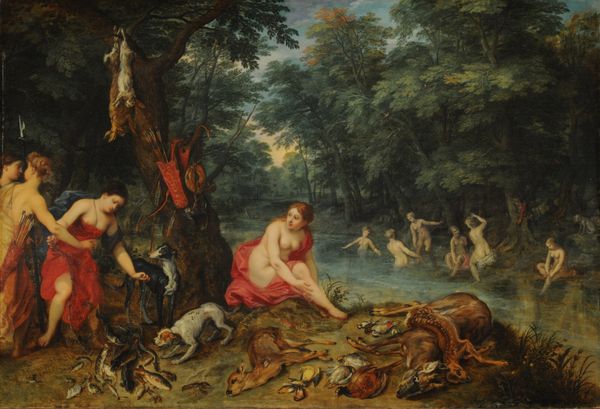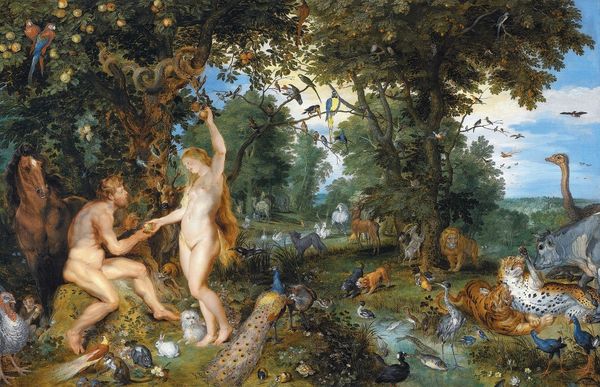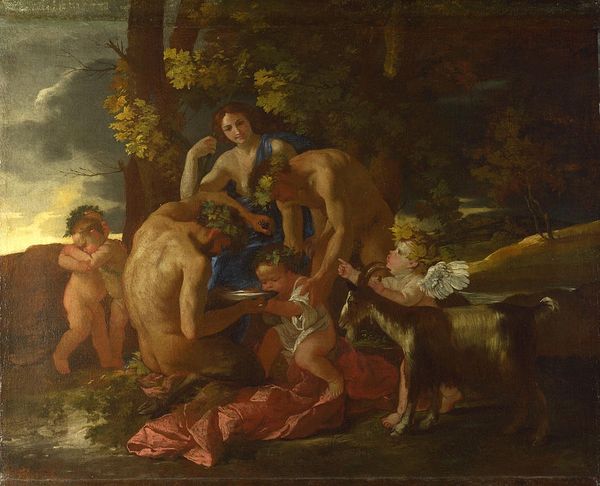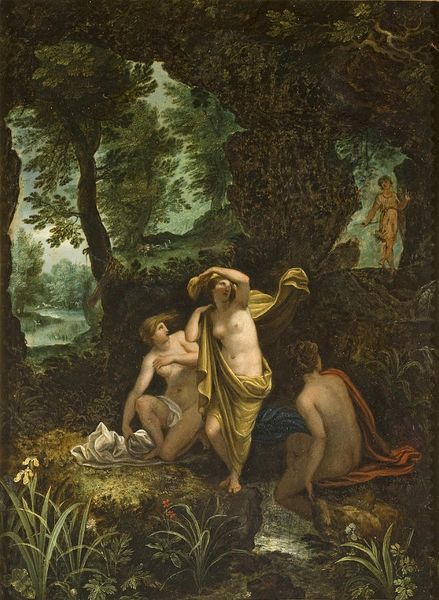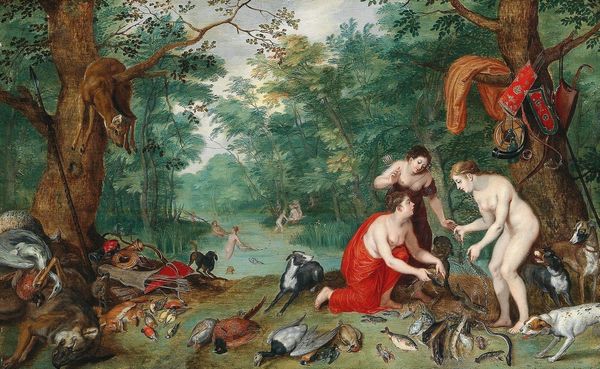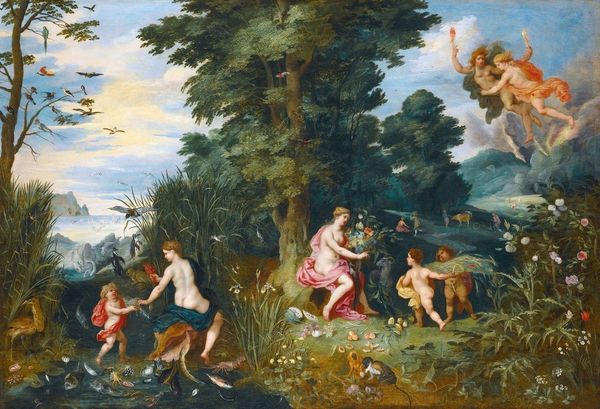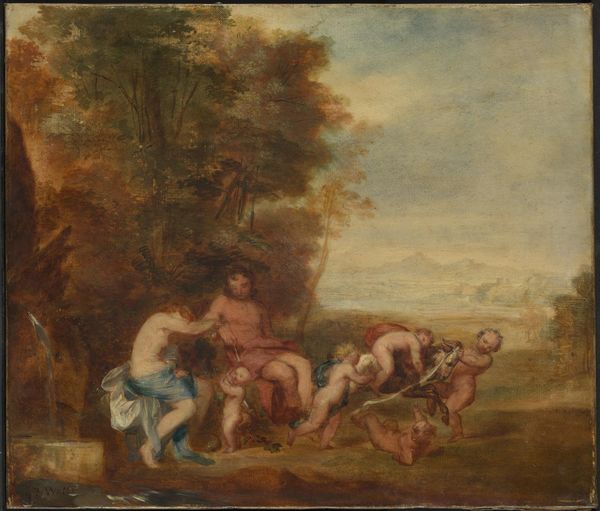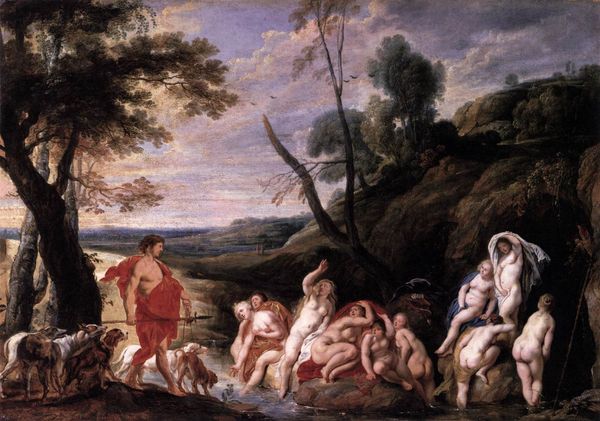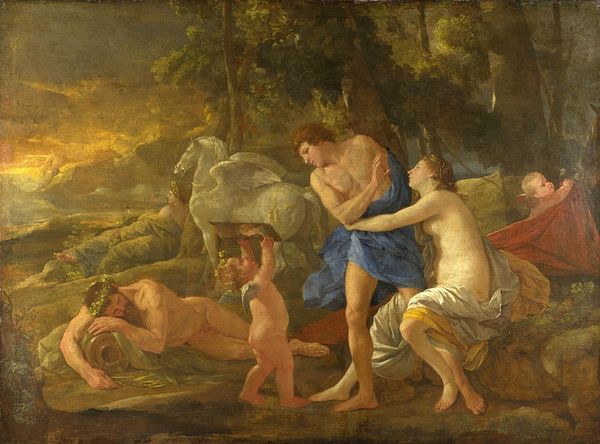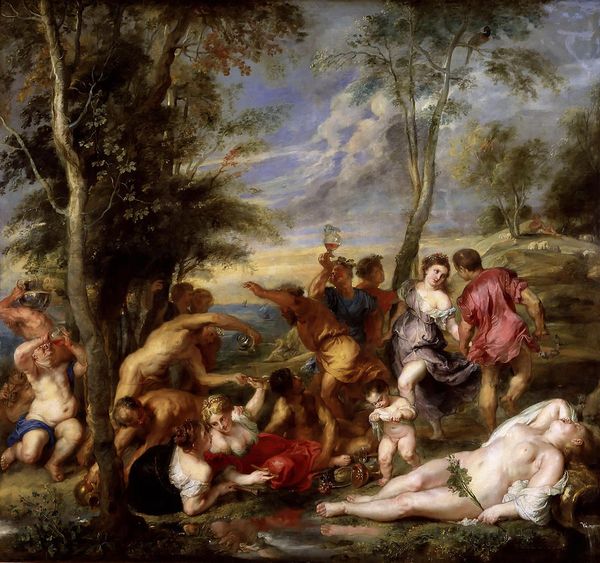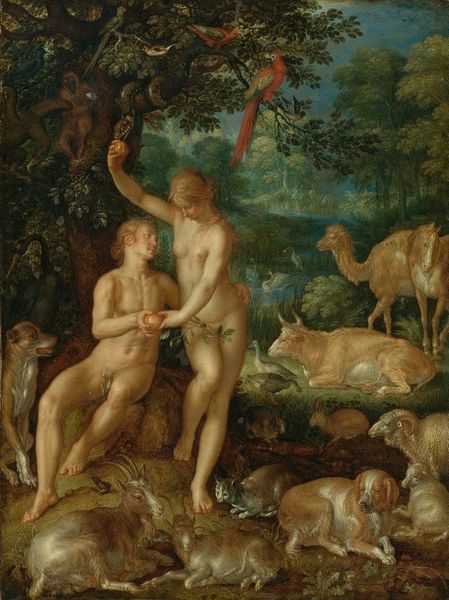
oil-paint
#
baroque
#
oil-paint
#
landscape
#
figuration
#
oil painting
#
mythology
#
history-painting
#
nude
Copyright: Public Domain: Artvee
Jan Brueghel the Younger painted "Apollo comforting Cyparissus" with oils, likely on a wood panel prepared with gesso. This ground would have provided a smooth, light surface for the detailed brushwork we see here. Note the layers of paint, thin and transparent in some areas, thicker and more opaque in others, built up to create depth and luminosity. The landscape, in particular, shows Brueghel's skill with this medium, layering colors to create atmospheric perspective. Oil paint, unlike fresco or tempera, dries slowly, allowing for blending and reworking—ideal for achieving the subtle gradations of light and shadow. The making of the artwork is tied to the availability of materials, pigments derived from minerals and plants, and linseed oil as a binder. This represents a sophisticated understanding of chemistry and a global trade network that brought these materials to Brueghel’s studio. In understanding this, we move beyond mere aesthetics, appreciating the social and economic contexts that made the work possible.
Comments
No comments
Be the first to comment and join the conversation on the ultimate creative platform.
